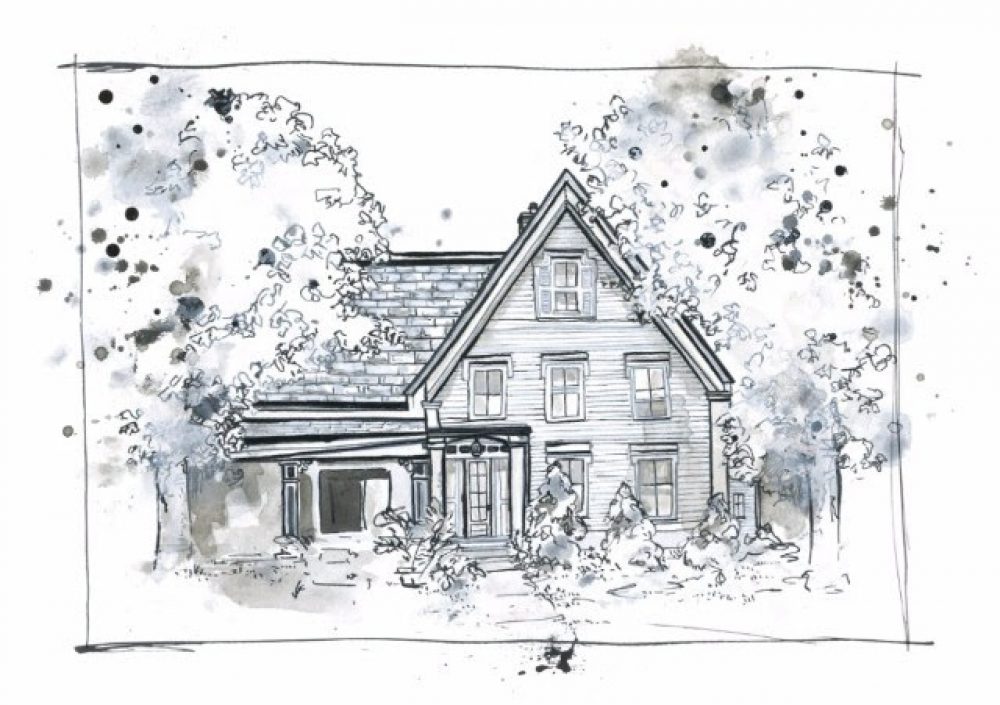The first time I saw Bunny was in 1964. She was driving a bright yellow VW bus, grinding gears as she downshifted to make it up the long hill that leads into our Vermont town. She and Lothar bought the 1830 Herd farmhouse for $10,000, half of which they borrowed from Lothar’s father. There was a well, but no pulley to get the water out. No heat. No toilet. No sinks.
Food was scarce. They ate daylilies and milkweed and made wine out of daisies, tomatoes, rhubarb and roses. Pancakes were made from locust tree flowers. One year, squirrels stole their harvest of butternuts, which had been left in the kitchen overnight. When Lothar dumped the field-dressed carcass of a deer on the kitchen table, Bunny had to use a book to figure out how to butcher it. Bunny loved “compost soup.” Every day she kept adding stuff to the pot; it just kept on going. The only heat was from the Franklin Stove in the kitchen. After five years, they bought an oil furnace from Sears—Lothar was sick of cutting and splitting wood. That first winter, they tried burning green wood. They didn’t know any better.
Neighbors took their time deciding what to make of Bunny and Lothar. They waited to see if they would last their first winter. If they did, then they would know that the couple were serious. People got friendlier, however, after the Congregational church burned down on town meeting day. That brought the town closer together.
Jenny Skidmore—the Skidmores, Bentleys, Woodcocks and Lombergs are the oldest families in town—had a heart of gold. She babysat the kids, sent Bunny and Lothar $50 at Christmas, and gave them a turkey for Thanksgiving. She invited them down to the sauna every Saturday night before they had their own—their one chance to get clean.
When they ran out of water, they loaded their 1959 Chevy Apache pickup with wooden barrels, fire-brigaded water up into the barrels from a local stream, then went back to fill up the well. Finally, they dug a hole in the swamp and put a wooden barrel in it with sand underneath. The water percolated up through into the barrel. A pipe with a pump got the water out.
They turned one of the barns into a sauna and, in the early days, that was the main social event for the younger residents in town. Everyone brought food. It was a good way to meet people as well—naked and in a dark, steamy room. More than one marriage started off that way.
One cold Saturday in February when Bunny knew that her time had come (Lothar had passed years before), she threw herself a party. She didn’t see any point in missing her own memorial service. She gave away her jewelry; folks read poems; we told stories.
I visited in early May, just a couple of weeks before the end. We sat outside on the stone patio. It was sunny but cool. Bunny was cheerful and looking forward to being reunited with Lothar, who is buried nearby in the apple orchard.
It was a generous life, lived just the way she wanted. A life that started out hard but ended well. Few of us have done better.
Cordially,

Christopher Kimball
Founder, Christopher Kimball’s Milk Street




